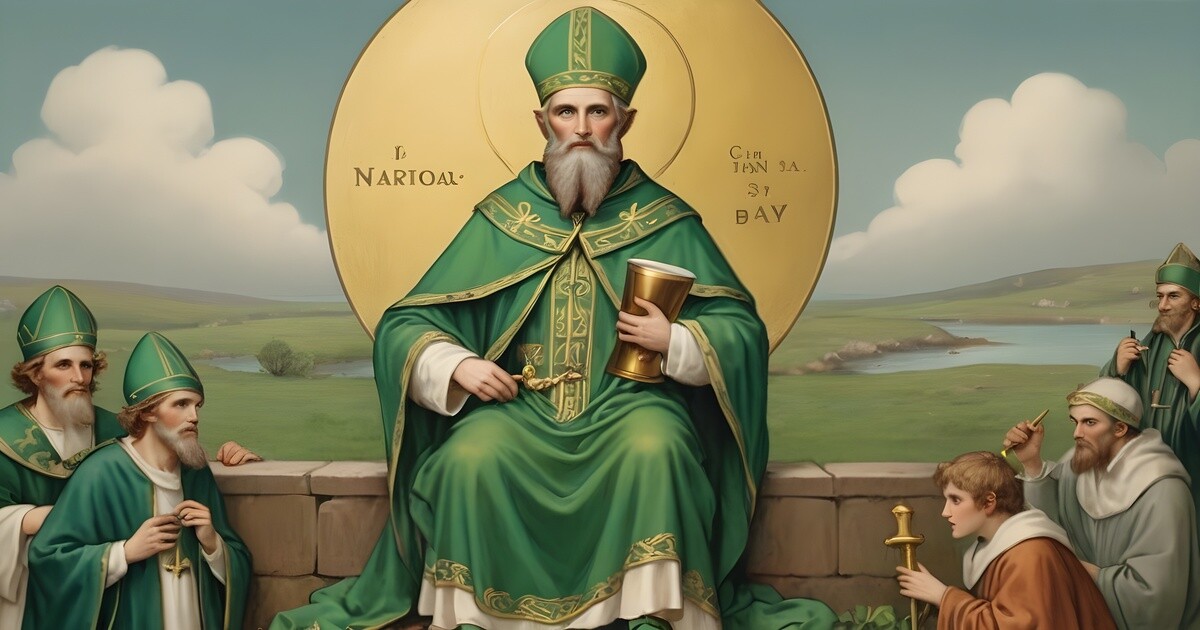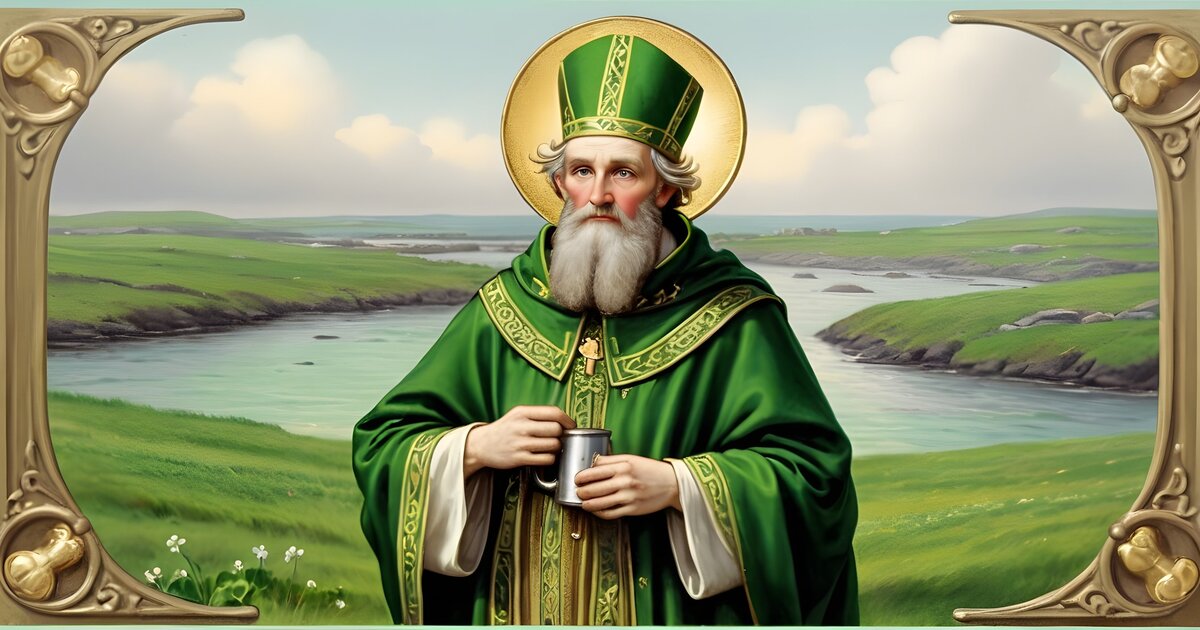In the shelves of history, certain figures loom larger than life, their legacies casting long shadows over generations. St. Patrick, the venerated patron saint of Ireland, is undeniably one such luminary.
Yet, beneath the layers of folklore and celebration that shroud his memory, lie lesser-known dimensions that enrich our understanding of this enigmatic figure.
-
The Early Years: Captivity and Conversion
St. Patrick’s journey towards sainthood was paved with hardship and resilience. Born in Roman Britain during the late 4th century, he was abducted by Irish raiders at the tender age of 16 and sold into slavery. Amidst the bleak backdrop of captivity, Patrick’s spirit remained unbroken, and it was during this period that he found solace in his burgeoning faith.
Contrary to popular belief, Patrick’s conversion to Christianity did not occur overnight. It was a gradual awakening, nurtured by the solitude of his pastoral duties as a shepherd. Through prayer and contemplation, he forged a deep connection with God, which would later fuel his missionary zeal.
-
Divine Calling: The Vision of Liberation
Legend has it that Patrick’s path to sainthood was paved by a divine vision. In a moment of profound revelation, he heard the voice of God urging him to escape captivity and embark on a journey back to his homeland. Guided by faith, Patrick heeded this celestial call, braving perilous seas to return to Britain.
However, his deliverance was not merely a physical exodus; it marked the inception of his divine mission. In a subsequent vision, Patrick received a divine mandate to return to Ireland, the land of his captivity, and bring the light of Christianity to its pagan inhabitants. Thus, began his apostolic odyssey, which would indelibly shape the course of Irish history.
-
The Legacy of Legends: Miracles and Myths
St. Patrick’s legacy is steeped in a tapestry of myths and miracles, each woven with threads of truth and embellishment. From banishing serpents from the Emerald Isle to using the shamrock to elucidate the concept of the Holy Trinity, his life is intertwined with a pantheon of fantastical tales that continue to captivate the imagination.
Yet, amidst the myriad legends that enshroud his memory, it is important to discern the kernel of truth that underpins his enduring legacy. While the historical veracity of certain anecdotes may be subject to debate, their symbolic significance in shaping Irish identity and cultural heritage remains undeniable.
-
A Testament of Faith: The Confession of St. Patrick
In his seminal work, the “Confession of St. Patrick,” the saint offers a rare glimpse into the inner workings of his mind and soul. Written towards the end of his life, this autobiographical account serves as a testament to his unwavering faith and missionary fervor.
In the pages of his confession, Patrick reflects on his tumultuous journey from captivity to liberation, recounting the trials and tribulations that forged his character. Through his candid introspection, he imparts timeless lessons on perseverance, forgiveness, and the transformative power of faith.
-
Beyond the Green: St. Patrick’s Global Impact
While St. Patrick is undeniably synonymous with Ireland, his influence transcends geographical boundaries. From the shores of America to the heartlands of Europe, his legacy continues to reverberate across continents, uniting disparate cultures under the banner of Christianity.
In the annals of history, St. Patrick emerges not merely as a patron saint of Ireland but as a global icon of faith, resilience, and cultural exchange. His indomitable spirit serves as a beacon of hope in an increasingly interconnected world, inspiring millions to embrace the values of compassion, tolerance, and solidarity.
-
Embracing St. Patrick’s Legacy: A Timeless Tribute
In commemorating St. Patrick’s Day, we pay homage not only to a historical figure but to the enduring ideals of faith, resilience, and cultural exchange that he embodies. As we revel in the festivities of this auspicious occasion, let us not forget the profound lessons that lie at its core, lessons that transcend time and borders, inspiring us to forge connections and bridge divides in an ever-changing world.
Celebrating St. Patrick’s Day across America: A Decade of Green and Glee
St. Patrick’s Day, a celebration deeply rooted in Irish heritage, has evolved over the years into a vibrant tapestry of parades, festivities, and cultural expressions across the United States. From the iconic Manhattan parade to the dyeing of the Chicago River, Americans embrace this day with enthusiasm, marking it not only as a tribute to Ireland’s patron saint but also as a celebration of Irish culture and identity. Over the last decade, the landscape of St. Patrick’s Day celebrations has witnessed significant milestones, from inclusivity movements to grand anniversaries, shaping the way this day is commemorated nationwide.
The Significance of St. Patrick’s Day:
Originally a religious holiday honoring Saint Patrick, the patron saint of Ireland, St. Patrick’s Day has transformed into a global celebration of Irish culture. With roots dating back over a thousand years, this day serves as a reminder of Ireland’s rich heritage and traditions, symbolized by iconic emblems like leprechauns and shamrocks. Across more than 200 countries, including the United States, St. Patrick’s Day is a testament to the enduring influence of Irish culture and its diaspora.
A Decade of Celebrations:
Over the past ten years, St. Patrick’s Day in the United States has witnessed remarkable milestones and evolving traditions. Major cities like New York and Chicago have seen an expansion of inclusivity, with LGBTQ+ groups participating in parades, marking significant strides toward diversity and acceptance. In Manhattan, the historic St. Patrick’s Day Parade, dating back to 1762, continues to draw massive crowds, showcasing the enduring legacy of Irish heritage. Additionally, events like the dyeing of the Chicago River have become iconic symbols of St. Patrick’s Day festivities, attracting locals and tourists alike to witness this spectacle of green.
Celebrating Diversity and Tradition:
Across the United States, St. Patrick’s Day celebrations embody a fusion of diversity and tradition. From the bustling streets of New York City to the scenic riverbanks of Savannah, communities come together to honor Irish culture through music, dance, and culinary delights. In cities like San Francisco, the parade serves as a platform for unity, bringing together people from different cultural backgrounds to celebrate a shared appreciation for Irish heritage. Moreover, smaller towns like Oklahoma City embrace the spirit of St. Patrick’s Day with unique touches, such as parades featuring longhorn cattle and colorful costumes.
The Joy of St. Patrick’s Day:
For many Americans, St. Patrick’s Day is a joyous occasion filled with laughter, camaraderie, and a sense of belonging. Families gather to share stories of their Irish ancestry, while friends revel in the festive atmosphere of parades and parties. Whether it’s witnessing the spectacle of the Chicago River turning green or marching alongside bagpipers in New York City, the joy of St. Patrick’s Day lies in the shared experience of community and culture. As Bryan Rox from Mount Pleasant expressed, seeing the river dyed green was a bucket list moment, highlighting the excitement and anticipation that surrounds this beloved holiday.
FAQs:
Why is St. Patrick’s Day celebrated?
St. Patrick’s Day originally commemorated the death of Saint Patrick, the patron saint of Ireland. Over time, it evolved into a celebration of Irish culture and heritage.
What is the significance of the color green on St. Patrick’s Day?
Green is associated with Ireland and Saint Patrick, symbolizing spring, rebirth, and the lush landscapes of the Emerald Isle.
How do people celebrate St. Patrick’s Day in the US?
St. Patrick’s Day in the US is celebrated with parades, music, traditional foods like corned beef and cabbage, and wearing green attire to avoid getting pinched.
Why is the Chicago River dyed green on St. Patrick’s Day?
The tradition of dyeing the Chicago River green dates back to the early 1960s and serves as a unique way to celebrate the holiday while showcasing the city’s Irish heritage.
Are there any environmental concerns associated with St. Patrick’s Day celebrations?
Efforts have been made to minimize environmental impact, such as reducing the amount of dye used in the Chicago River and promoting eco-friendly practices during parades and festivities.






